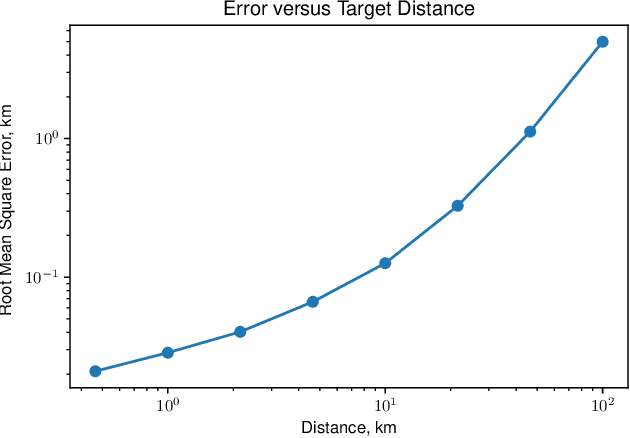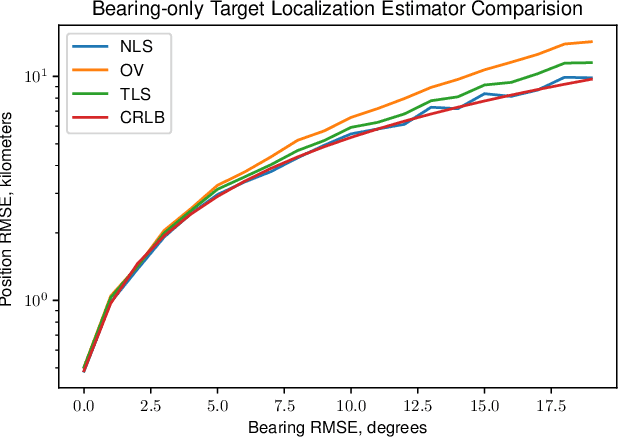Multi-Target Localization Using Polarization Sensitive Arrays
Paper and Code
Aug 18, 2021



In this work we develop clustering techniques for the Bearing Only Target Localization (BOTL) problem. Our scenario has a receiver move along some path, generating bearing estimates on some interval. Multiple emitting targets exist in the environment, and may be physically close with respect to the receiver distance. The first method is iterative and uses only a series of observed bearings to multiple targets to establish clusters. In each iteration, target positions are estimated using a nonlinear least squares solution. The second technique uses additional polarization information, and is shown to be more effective while requiring more information. In addition the second technique is non-iterative and requires far less computation. In this work we presume knowledge of the number of targets. We conclude by providing simulations of our method and show that the proposed approach outperforms previously proposed methods.
 Add to Chrome
Add to Chrome Add to Firefox
Add to Firefox Add to Edge
Add to Edge